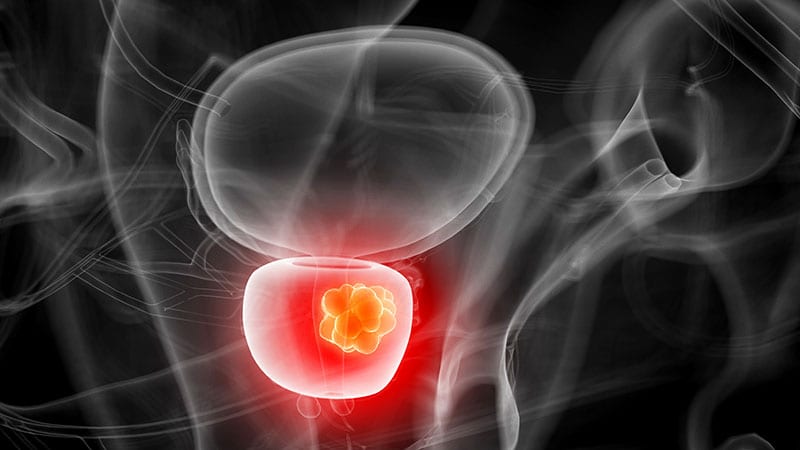Baseline MRI Findings Improve Prostate Cancer Risk Stratification and Active Surveillance Decisions
Kernkonzepte
Baseline MRI findings, particularly higher Prostate Imaging Reporting and Data System (PI-RADS) scores, can significantly improve prognostic accuracy and risk reclassification for prostate cancer patients considering active surveillance.
Zusammenfassung
This multicenter, real-world study examined the relationship between baseline MRI findings and the risk of disease reclassification during active surveillance for prostate cancer patients with low-risk or favorable intermediate-risk disease.
The key findings include:
After accounting for traditional risk factors, baseline PI-RADS score of 4 or higher was significantly associated with a 2.3-fold increased likelihood of biopsy reclassification to high-grade prostate cancer.
This association was observed in both the low-risk and favorable intermediate-risk groups, suggesting the additive value of baseline MRI for risk assessment.
Increasing age was also a risk factor for disease reclassification during active surveillance.
The authors note that incorporating baseline MRI findings, particularly PI-RADS scores, into the overall risk assessment framework could help refine patient management strategies, such as adjusting surveillance intervals or guiding the choice between active surveillance and immediate treatment, especially for those with favorable intermediate-risk disease.
The large, multicenter cohort and focus on the prognostic value of baseline MRI in active surveillance make this study a crucial contribution that is likely to influence future clinical guidelines for prostate cancer management.
Could Baseline MRIs Reshape Prostate Cancer Risk Assessment?
Statistiken
Patients with baseline PI-RADS score of 4 or higher were more than twice as likely to have higher-grade disease within 5 years (HR 2.3, 95% CI 1.6-3.2, p<0.001).
Increasing age was also associated with significantly increased risk of disease reclassification during active surveillance.
Zitate
"These patients with suspicious lesions on their initial MRI were more than twice as likely to have higher-grade disease within 5 years."
"MRI, already a commonly used imaging modality in prostate cancer management, may become an even more integral part of the initial assessment and ongoing monitoring of patients with low or favorable-intermediate risk prostate cancer."
Wichtige Erkenntnisse aus
by Will um www.medscape.com 08-23-2024
https://www.medscape.com/viewarticle/could-baseline-mris-reshape-prostate-cancer-risk-assessment-2024a1000fgy
Tiefere Fragen
How can the integration of baseline MRI findings with emerging AI-based risk assessment models further improve prostate cancer risk stratification and management decisions?
The integration of baseline MRI findings with emerging AI-based risk assessment models holds great promise in enhancing prostate cancer risk stratification and management decisions. By combining the detailed imaging information provided by MRI with the analytical power of AI algorithms, healthcare providers can achieve a more comprehensive and accurate assessment of a patient's disease status. AI can analyze vast amounts of data from MRI scans, identifying subtle patterns and features that may not be easily discernible to the human eye. This can lead to earlier detection of aggressive disease, better prediction of disease progression, and more personalized treatment recommendations. Furthermore, AI can continuously learn and improve its predictive capabilities over time, making it a valuable tool in refining risk assessment models. The synergy between baseline MRI findings and AI-based risk assessment models can ultimately result in more tailored and effective management strategies for patients with prostate cancer.
What are the potential barriers to widespread adoption of baseline MRI as a standard component of prostate cancer risk assessment, and how can they be addressed?
Despite its potential benefits, there are several barriers to the widespread adoption of baseline MRI as a standard component of prostate cancer risk assessment. One significant barrier is the cost associated with MRI scans, which may limit access for some patients or healthcare facilities. Additionally, there may be challenges in standardizing MRI protocols and interpretations across different institutions, leading to variability in results. Moreover, there could be resistance to change from healthcare providers who are accustomed to traditional risk assessment methods.
To address these barriers, efforts should be made to increase awareness about the value of baseline MRI in prostate cancer risk assessment among healthcare professionals, patients, and policymakers. This includes highlighting the potential long-term cost savings and improved outcomes associated with early and accurate risk assessment. Standardized guidelines and protocols for conducting and interpreting prostate MRI should be developed to ensure consistency and reliability across diverse clinical settings. Collaboration between radiologists, urologists, and other healthcare professionals is essential to establish best practices and facilitate the integration of baseline MRI into routine clinical care. Additionally, research and advocacy efforts can help drive policy changes and reimbursement strategies to make baseline MRI more accessible to all patients who could benefit from it.
Given the limitations of inter-reader variability in PI-RADS scoring, what strategies can be employed to ensure consistent and reliable interpretation of baseline prostate MRI across diverse clinical settings?
To ensure consistent and reliable interpretation of baseline prostate MRI across diverse clinical settings, several strategies can be employed to address the limitations of inter-reader variability in PI-RADS scoring. One approach is to provide standardized training and certification programs for radiologists and other healthcare professionals involved in reading and interpreting prostate MRI scans. These programs can ensure that readers are proficient in the use of PI-RADS guidelines and are able to apply them consistently.
Centralized reading and review of MRI scans by dedicated prostate MRI experts can also help minimize variability in interpretation. Establishing quality control measures, such as regular audits and feedback sessions, can further enhance the reliability of MRI interpretations. Utilizing advanced imaging technologies, such as computer-aided detection systems, can assist radiologists in identifying and characterizing suspicious lesions more accurately.
Collaboration and communication between radiologists, urologists, and other members of the multidisciplinary team are essential to ensure that MRI findings are integrated effectively into patient management decisions. Regular multidisciplinary meetings can facilitate consensus on challenging cases and promote a shared understanding of the implications of MRI findings. By implementing these strategies, healthcare providers can improve the consistency and reliability of baseline prostate MRI interpretations, ultimately enhancing the quality of patient care.
0
